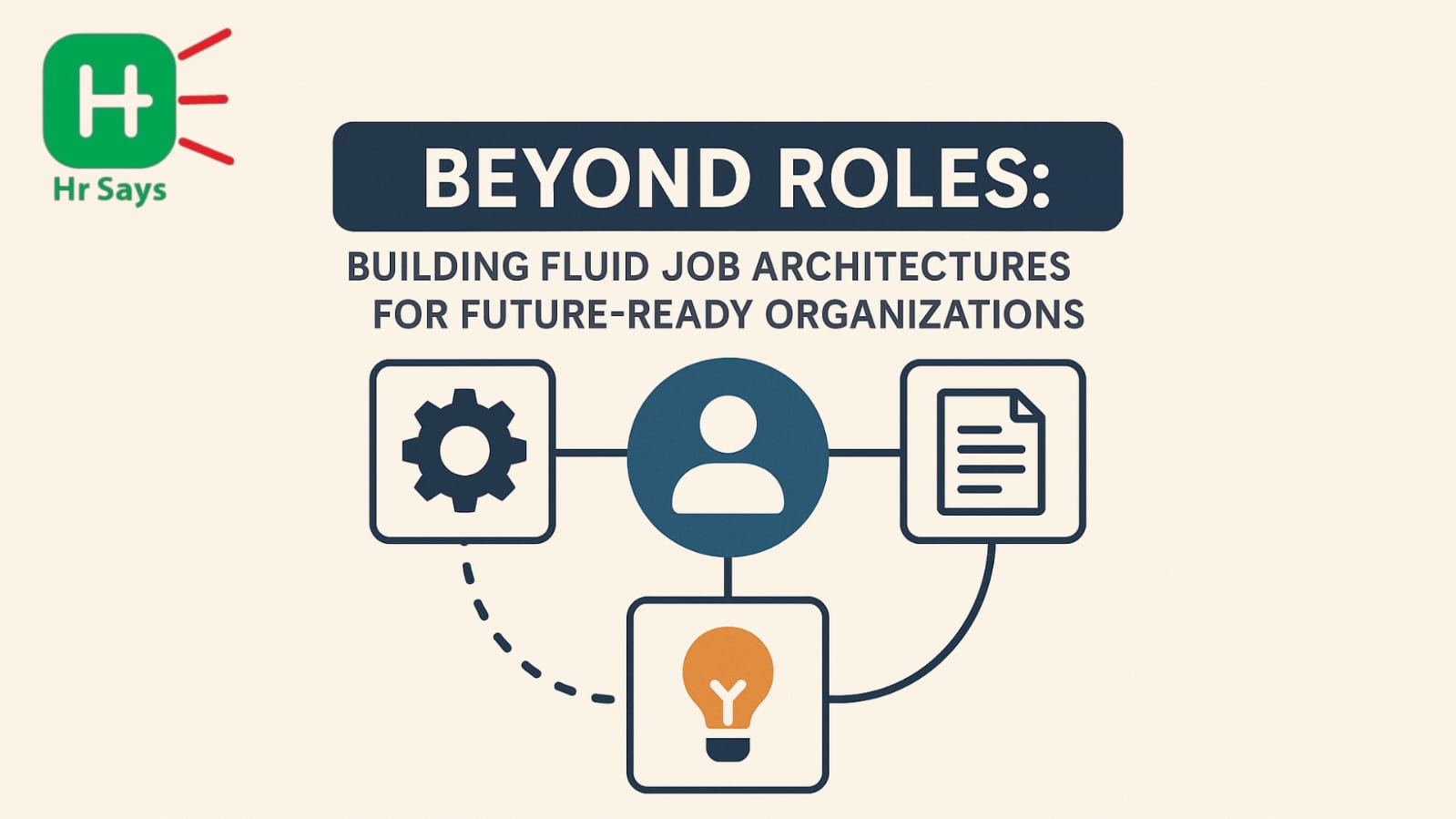What if a job was no longer a box on an org chart? What if titles mattered less—and capabilities more?
The future of work isn’t about hierarchy. It’s about flexibility. A shift is underway. Slow. Subtle. But deep.
The Problem with Fixed Roles
Jobs were designed for predictability. A task. A title. A checklist.
But today's work isn’t that linear. It’s layered. Uncertain. Often shared.
And fixed roles create friction.
● People get boxed in.
● Skills go underused.
● Collaboration weakens.
● Innovation slows down.
A marketing lead might also be a storyteller. A data analyst could be a product thinker. Old job maps miss that.
What Are Fluid Job Architectures?
It’s not just job descriptions getting rewritten. It’s the entire system being reimagined.
Fluid job architecture means:
● Skills-first, not title-first
● Dynamic teams over fixed departments
● Learning as part of the job—not beside it
● Growth based on contribution, not years served
Work becomes more modular. Employees move across functions. Roles evolve without needing
a promotion. Think horizontal, not just vertical.
How It’s Being Done (Silently)
This shift isn’t loud. It’s happening in sprints, not leaps.
● HRs are mapping skills inventories, not just headcounts.
● L&D teams are building internal mobility paths.
● Leaders are encouraging cross-functional projects.
Sometimes, job titles stay the same. But what people do? That changes—often.
Technology helps. But culture is the real enabler. Without trust, this doesn’t work.
Why It Matters
This isn’t just an HR experiment. It’s a business need.
● Disruption is faster. Roles can’t stay rigid.
● Gen Z and Millennials crave flexibility.
● Specialized skills are hard to hire, easier to grow.
And let’s be honest—retention isn’t driven by ping pong tables. It’s driven by growth that feels
real.
Fluid job structures don’t just retain talent. They unlock it.
The Caution Zone
It’s not all perfect.
● Some employees feel lost without clarity.
● Managers struggle to coach in a changing setup.
● Measurement becomes tricky. Who owns what?
Boundaries are needed. Not every job can be fluid. Structure still matters. Just not as much as before.
Conclusion
Roles are not vanishing. They’re just becoming less fixed and more alive.
The best organizations won’t be the ones with the fanciest job titles. They’ll be the ones where work moves with change—not against it.
Job architecture isn’t just a system. It’s a mindset.
And in that mindset, fluidity is the new foundation.

 Rigid roles are fading. In their place, fluid job architectures are being built—quietly, steadily. Organizations are adapting, not by changing people, but by rethinking structure itself.
Rigid roles are fading. In their place, fluid job architectures are being built—quietly, steadily. Organizations are adapting, not by changing people, but by rethinking structure itself.












.jpeg)
.jpeg)

.jpeg)

.jpeg)


.jpeg)

.jpeg)

.jpeg)


